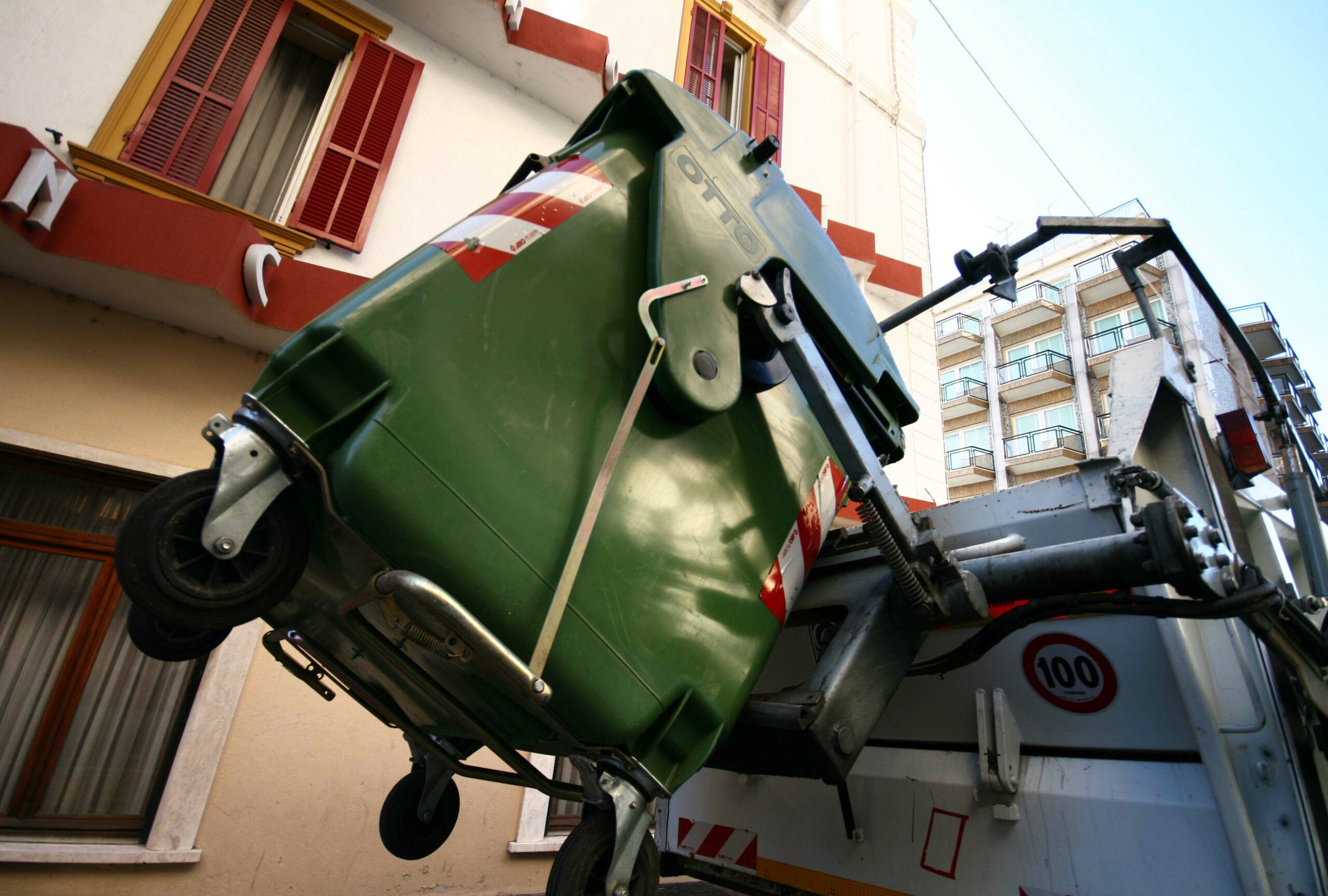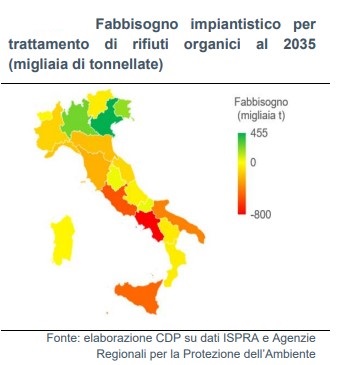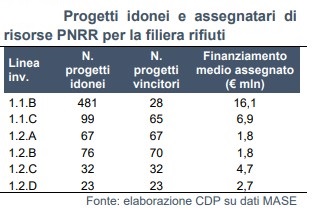Waste, what Italy must do to reduce the gap between the regions. CDP report

In Italy, recovery and disposal capacities are not well distributed throughout the country: on the contrary, in many central-southern regions there is a serious shortage of plants. All the data in the CDP analysis entitled Waste and territorial gaps: what prospects for Italy?
In our country, the capacity to recover and dispose of the waste produced has marked territorial differences, linked to a geographical distribution of the plants that is not homogeneous in terms of number, authorized capacity and technological choices.
THE DIFFERENCES BETWEEN NORTH, CENTRAL AND SOUTH ON THE RECOVERY PLANTS
About 65% of the total treatment capacity authorized for organic fraction recovery plants is concentrated in the North.
In Central Italy, on the other hand, the current treatment capacity of the plants is barely sufficient to manage half of the organic fraction collected.
The different plant equipment has significant implications on the operating balance: the North is in fact able to treat more waste than that actually collected, while as many as 9 out of 12 regions in the Centre-South register a deficit, which in some areas has led to the start of procedures of community infringement.
In these cases, to remedy the lack of plants, the organic waste is exported for treatment to regions that are even very distant from the place of production. For example, Campania and Lazio deliver 25% and 14% of the waste produced outside the region, mainly in non-neighboring regions.
The territorial disparities in terms of plant engineering are manifested not only in quantitative terms, but also in qualitative terms. In fact, the central-southern regions are characterized by a scarce presence of complex technology plants which allow the production of biogas as well as the recovery of materials.
2.4 MILLION TONNES OF INSTALLATION NEEDS TO BE FILL
With reference to the treatment of the organic fraction alone, it is estimated that the plant requirement by 2035 to be filled in order to meet the European targets amounts to approximately 2.4 million tonnes.
The greatest needs are recorded in the Centre-South, in particular in Campania (about 800 thousand tons), Lazio (over 500 thousand tons) and Sicily (over 450 thousand tons), while some regions of the North, such as Veneto, Lombardy and Friuli-Venezia Giulia fully self-sufficient (graphic).

HIGHER COSTS FOR THE TARI
Closing the plant gap would make it possible to reduce the extra costs associated with the transport of waste outside the region, which are reflected in an additional 75 million euro of Tari, 90% borne by the central-southern regions, despite the quality levels of the service generally lower than in the rest of the country.
A family residing in the South sustains on average an expense for the integrated urban waste management service that is over 25% higher than a family residing in the North (359 euros a year vs 282 euros).
THE ROLE OF THE PNRR
The PNRR, which allocates over 2 billion euros for the waste supply chain, provides an initial response to the critical issues highlighted, directing the plant requirements for the treatment and recycling of organic waste and other product fractions.
In particular, the PNRR represents an important opportunity to:
- strengthen the infrastructure for separate collection and recycling, through the expansion and modernization of treatment/recycling plants for organic waste, multi-material, glass, paper packaging and particular flows (e.g. waste water sludge), for which a total of 1.5 billion euros are allocated;
- support the implementation of highly innovative infrastructural projects (so-called "lighthouse" projects) in strategic supply chains such as WEEE , the paper and cardboard industry, textiles, mechanical recycling and plastic chemistry, through a total allocation of 0.6 billion euro.
The investments envisaged by the PNRR are aimed, in particular, at bridging the plant gap for the treatment of waste from separate collection between the regions of the North and of the Centre-South: in fact, the latter are allocated by law the most significant portion of the appropriations (60%). In addition to the territorial criterion, the process of assigning resources to the projects presented takes into consideration many aspects ranging from the improvement of the plant deficit, to the design level, to technological development and implementation times.
THE RESOURCES ARE CONCENTRATED IN A FEW REGIONS
However, the resources allocated tend to be concentrated in just a few regions. This is mainly explained by the rapid depletion of funds attributable to the high average value of the individual projects awarded (table), above all in the case of projects for the development of urban waste treatment plants (line 1.1.B) and particular flows (line 1.1.C).

With reference to the investment line relating to the construction and expansion of treatment/recycling plants for urban waste from separate waste collection, out of the more than 480 projects deemed suitable, less than 30 were financed. 70% of the allocated funds are concentrated in five regions, in particular:
- Sicily (over 20% of resources)
- Abruzzo (14%)
- Sardinia (12%)
- Liguria (11%)
- Piedmont (10%)
The projects financed for the aforementioned investment line (450 million euros) certainly do not meet the needs, especially in regions such as Lazio and Campania which, as we have seen, record an important plant engineering demand, as also demonstrated by the high volume of projects presented ( 99 and 49, respectively, those deemed suitable). These two regions in particular have failed to obtain funding due to the depletion of the territorial ceiling (270 million for the Centre-South as a whole).
This is a machine translation from Italian language of a post published on Start Magazine at the URL https://www.startmag.it/circular-economy/rifiuti-distribuzione-impianti-regioni/ on Sat, 04 Feb 2023 06:01:32 +0000.
